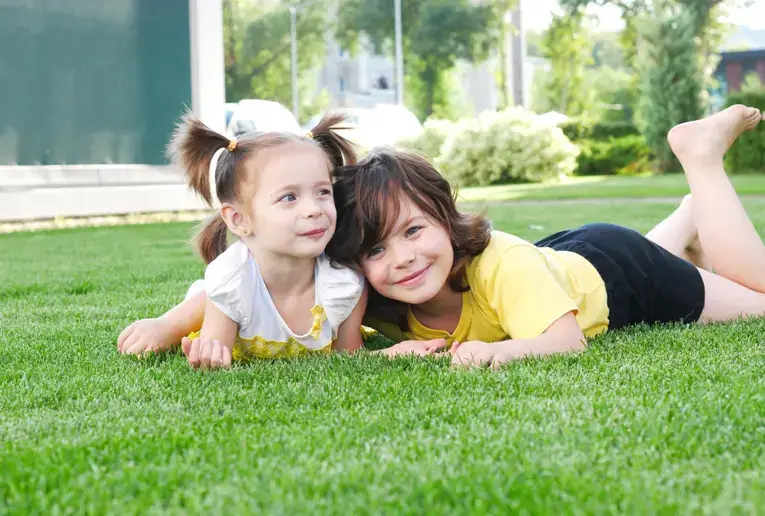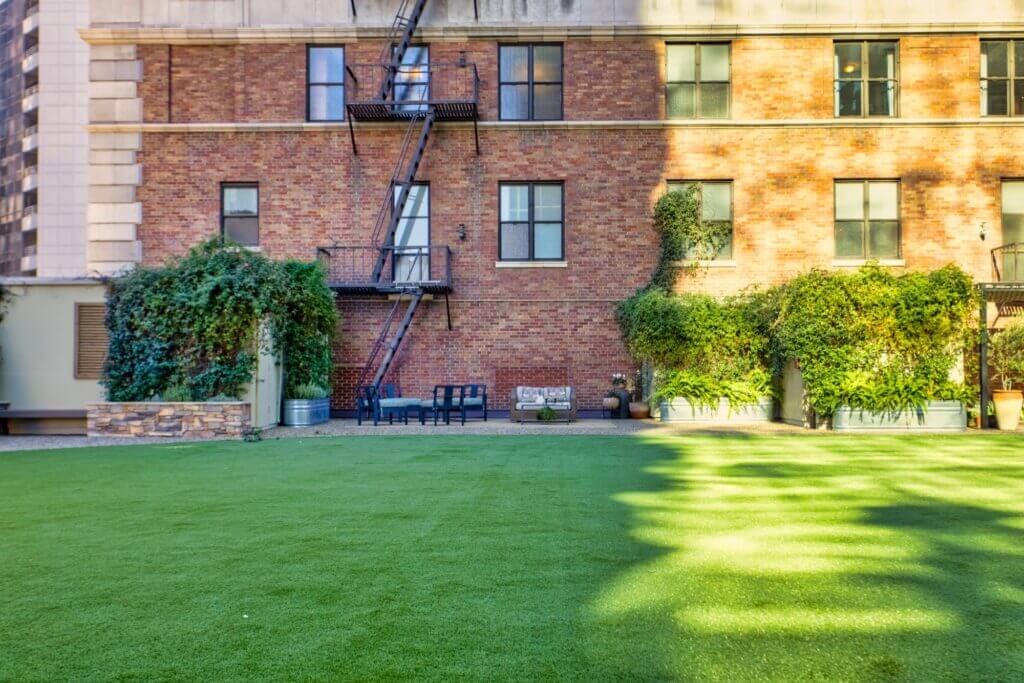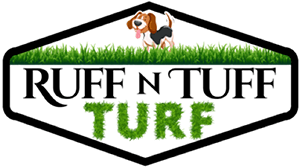Artificial turf has come a long way since its invention in the 1960s. What was once known as AstroTurf, a rough and abrasive surface primarily used for sports fields, has evolved into modern synthetic grass, a versatile and realistic alternative to natural grass. In this blog post, we will look at the evolution of artificial turf, from its early beginnings to the advanced technology used in today’s synthetic grass. We will explore the benefits and drawbacks of each generation of artificial turf and discuss the future of this innovative landscape solution. So, whether you’re a sports enthusiast, a homeowner, or a landscaper, keep reading to learn more about the history and evolution of artificial turf.
Brief history of artificial turf
Modern synthetic grass came into existence in the 1970s. These artificial turf were made of natural grass fibers glued together to create a fabric similar to traditional turf grass. Today, there are various types of synthetic turf available on the market. These include Polyester, nylon, ceramic-embedded nylon, and artificial e-grass (also known as eco-golf). They vary in price, durability, color, and Feel (a term used to describe the quality of playability). Artificial turf is often used in sports and outdoor areas due to its many benefits and advantages.
The Evolution of Artificial Turf
The history of artificial turf dates back to the mid-20th century when scientists and engineers began experimenting with synthetic materials as an alternative to natural grass.
First Generation
In the 1960s, the first generation of artificial turf, known as AstroTurf, was invented. This early version of artificial turf was primarily used for sports fields. It was made of a combination of rubber and plastic fibers, tufted into a backing material. AstroTurf was designed to mimic the look and feel of natural grass. Still, it quickly became known for its rough, abrasive surface and lack of durability.
Second Generation
The second generation of artificial turf, which emerged in the 1970s and 1980s, was designed to address some of the shortcomings of AstroTurf. This generation of artificial turf featured longer fibers and a softer, more realistic texture. Additionally, using sand and rubber infill helped improve the turf’s durability and make it more suitable for high-traffic areas.
Third Generation
In the 1990s, the third generation of artificial turf was introduced. This generation of artificial turf featured even longer fibers and a more natural-looking color. Additionally, new technologies were developed to improve the drainage and overall performance of the turf. The infill was made of a rubber and sand mixture, enhancing drainage and making the surface safer for sports.
Fourth Generation
The fourth generation of artificial turf, which is currently in use, is made of polyethylene fibers, known for their durability, resistance to UV rays, and realistic appearance. These fibers are more flexible and softer than the previous generation and can mimic the look and feel of natural grass more closely. In this generation, the infill is made of cork, rubber, or a mixture of both. This infill not only improves the performance of the turf but also reduces the environmental impact.
Present
Artificial turf is used for a wide range of applications, including sports fields, playgrounds, parks, and residential and commercial landscaping. The technology continues to evolve, with innovations such as infill made from recycled materials that reduce the environmental impact even more.

AstroTurf
AstroTurf is a synthetic turf with a textured surface and is often brightly colored. It’s used in sports stadiums and other arenas for its durability and ability to withstand high foot traffic. AstroTurf is made by weaving together synthetic fabric fibers into a grid. Some fabrics used in AstroTurf are recycled materials, such as cycolac and plastic bottles. Modern synthetic grass is made from natural fibers, such as coconut husks or grass seed, and synthetic materials, such as nylon or polyethylene. Some types of modern artificial turf have a higher bounce rating than AstroTurf, making them more suitable for playing on. Synthetic grass can be installed on any surface, including concrete and asphalt.
Advantages of AstroTurf
AstroTurf is a synthetic turf that was first developed in the 1970s. AstroTurf is lightweight and easy to install, making it ideal for sports fields and commercial applications. AstroTurf has many advantages over natural grass, including increased safety for players and staff, reduced maintenance costs, and a longer lifespan. However, AstroTurf is less durable than natural turf and may require replacement after a few years of use. Despite its short lifespan, AstroTurf is an effective artificial grass solution for applications where durability and installation time are vital concerns.
Modern Synthetic Grass
Modern synthetic grass is a popular artificial turf option. AstroTurf was the first artificial turf that became popular in the 1970s and ’80s. Modern synthetic grass is a recent invention made from synthetic materials. Durable synthetic grass is designed to last several years without needing to be replaced. Eco-friendly artificial grasses are also gaining popularity. These artificial grasses don’t contain harmful chemicals and can help improve the environment. The majority of artificial turf fields are made with artificial turf. This turf has many benefits, including being durable and easy to clean. It’s also affordable and easy to install. However, some people are concerned about its safety and environmental impact, so they’re also looking for other options.
Advantages of modern synthetic grass
Modern synthetic grass is a durable and versatile surface used outdoors in different settings, from residential patios to sports fields. It is fireproof and waterproof, making it suitable for use in areas prone to fire or rain. This turf is also low-maintenance and doesn’t require regular upkeep. Instead, it requires only occasional maintenance, such as light dusting or sweeping. These features make synthetic grass an environmentally friendly option for outdoor applications. It is without pesticides or fertilizers, making it a cost-effective solution for landscaping projects. Modern synthetic grass has proven to be a versatile and sustainable solution for outdoor spaces.
Advancements in Artificial Turf Technology
Artificial turf has come a long way in terms of technology. AstroTurf is the most popular artificial turf product in the world. Still, modern synthetic grass is much more realistic and lifelike than AstroTurf. Microfilmed turf uses a small piece of artificial turf to create a 3D model, allowing suppliers to shape and customize artificial grass pitches precisely. Virtual reality turfs use special software to simulate real-world conditions on artificial turf fields, providing players with an immersive experience. Smart turfs use sensors to track player movement, reacting accordingly to create a more realistic playing experience. These advancements have made artificial turf an ideal option for sports fields, making it more popular among players and enthusiasts than ever before.
Comparison of AstroTurf and Modern Synthetic Grass Materials
On the other hand, modern synthetic grass is made of various materials, including polyethylene, polypropylene, and nylon. These materials are designed to mimic the look and feel of natural grass, with longer and more realistic fibers. They are also designed to be more durable and resistant to wear and tear. Additionally, they are UV-stabilized, making them resistant to fading and discoloration from exposure to sunlight.
In terms of infill, AstroTurf typically uses a layer of sand as infill. However, modern synthetic grass can use various infill materials such as rubber crumbs, coconut fibers, and cork. These infill materials provide extra cushioning and support to the synthetic grass fibers, which makes them more comfortable to walk and play on.
Comparison of Installation and Maintenance
AstroTurf, the original brand of artificial turf, was first developed in the 1960s and was made of a short-pile, rubber-based material. On the other hand, modern synthetic grass is made of various materials, including polyethylene, polypropylene, and nylon.
Installation of AstroTurf typically involved laying a layer of crushed stone or gravel as a base, followed by a layer of sand and then the AstroTurf material. The turf was then anchored down with nails or adhesive. Installation of modern synthetic grass is similar, but the base layer is often made of a porous material such as recycled rubber. The grass fibers are often longer and more realistic in appearance.
Maintenance of AstroTurf involved regular brushing and raking to keep the fibers upright, as well as using a specialized cleaner to remove stains. Modern synthetic grass requires less maintenance, as the fibers are often made of a more durable material and are less prone to matting. However, it still requires occasional cleaning and may need to be refilled with infill material to keep the blades upright.

Conclusion
Artificial turf has evolved over the years to become a popular and sustainable artificial grass option. They offer durability, aesthetic appeal, and low maintenance, making them ideal for sports fields, playgrounds, and other outdoor locations. However, as with any artificial grass surface, artificial turf surfaces require regular maintenance to ensure they last as long as possible. If you’re interested in learning more about artificial grass technology or would like to schedule an appointment with our artificial grass specialists at Ruff N Tuff Turf in Irvine, CA, feel free to contact us at (949) 408-0360 today.


